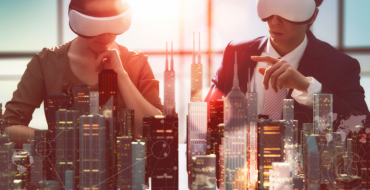
The use of virtual reality in the construction industry continues to grow, providing an extremely immersive experience for users. Although the entertainment and automotive industries are quick to adopt this technology, the construction industry is not far behind. Virtual reality provides an extremely versatile tool in construction, and its applications can be seen in multiple areas. This article discusses the current uses of virtual reality in construction, the benefits of its application and how it may impact the future of the industry.
Find the original article at: http://www.constructionworld.org/virtual-reality-will-change-construction-industry/
3D Models and Virtual Reality
To better understand virtual reality, one must start by recognizing the importance of 3D models. One of virtual reality’s most prominent use in construction is through building information modeling (BIM), and works by collecting a series of images to create detailed three-dimensional pictures. A variety of technologies, like 3D laser scanning and drone collected imagery are used to create these lifelike and vivid set of pictures.
For real estate developers, designers and architects, this newfound design experience is able to take potential customers and clients on a virtual tour of homes, buildings, skyscrapers and offices – before a project even breaks ground. On a smaller scale, home and office renovations, redesigns and small construction projects can also take advantage of 3D models, to create a more accurate plan of client’s demands, established during the pre-construction stage. A set of virtual reality glasses brings these 3D models to life, allowing users to immerse themselves into a finished product.
Apart from assisting in the design phase, 3D models and virtual reality is starting to be implemented during the construction process as well. 3D models and virtual reality are slowly being introduced during high-coordination and architecturally-complex projects. Conflicts and mistakes can be found on a 3D model, during the construction process and this data can divert any errors before it is made on a construction site. Computer-generated imagery also helps to envision the end-results of a project during the design stages.
Increased Collaboration
Virtual reality allows for greater collaboration and coordination between constructors, design personnel and owners. For owners or clients of a project, a virtual reality experience provides them with a far more realistic vision, rather than typical drawings or plans will. For many clients, it is difficult to think in three dimensions, and verbal or written plans leave too much room for interpretation. Virtual reality brings the specific vision of a client to life, and provides plenty of room for sharing ideas and making alterations during the pre-planning stages. By utilizing wearable presentation gadgets, 3D glasses and headsets more frequently, many forward-thinking construction professionals will begin to recognize the practicality of this technology.
Future Applications
As it stands, construction companies are not using virtual reality to its fullest capabilities, and only aid in certain parts of a project’s process. Virtual reality is mainly used in pre-production as a design feature, but also has the ability to provide accurate projections during the course of a given project.
Although the benefits of virtual reality are well known, the technology’s main obstacle lies in its public perception. Because virtual reality originated from the video game industry, construction companies and customers alike may be skeptical to adapt its use. As it stands, the current technology is quite effective, but changing people’s perception and increasing its application in more professional settings will help expand the technology. In order for this to happen, more construction companies must apply virtual reality, which will help to showcase the benefits of this technology.
One element that may help push virtual reality to the forefront of construction would be the growing number of younger workers in construction. Younger generations are far more open to change, with many who are eager to innovate and revolutionize the construction industry. With the influx of virtual reality software, programs and apps, its acceptance will only continue to grow, and will eventually influence construction in a much more impactful way. Click the link for more construction technology news.